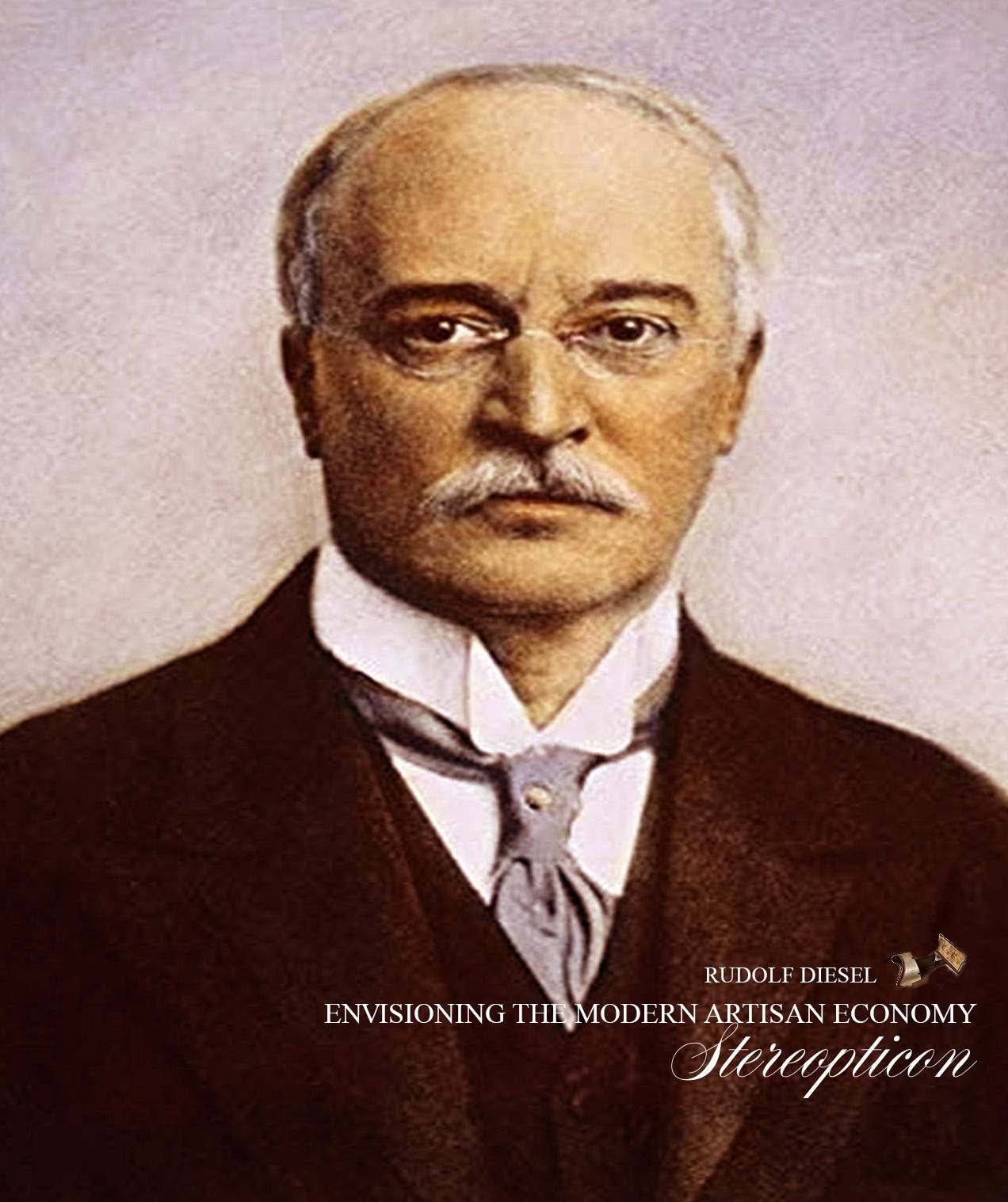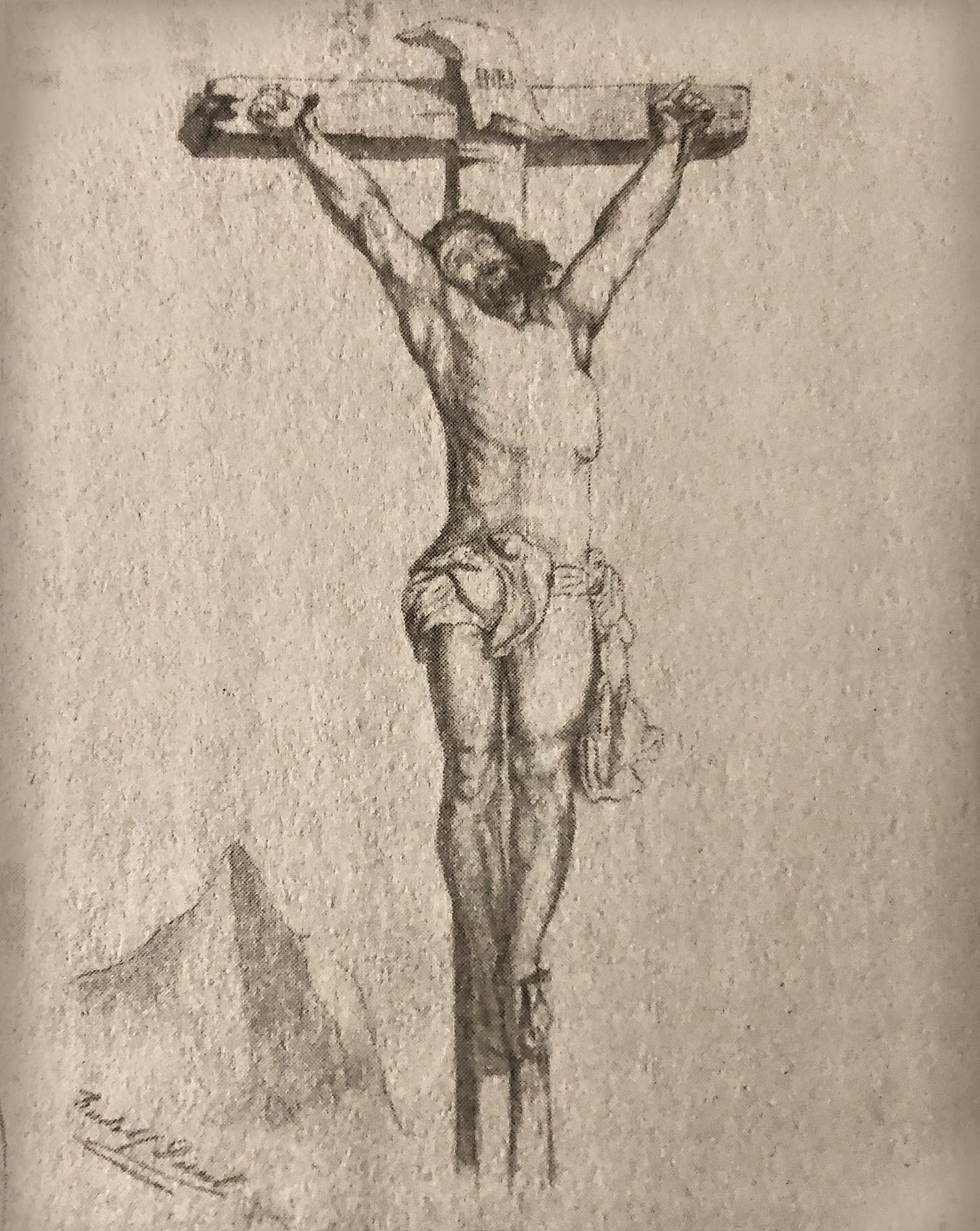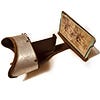Rudolf Diesel was born on March 18, 1858 in Paris, France. He was the son of Theodor and Elise Diesel, who were craftspeople – they worked from a small shop. They struggled to make ends meet and at the onset of the Franco-Prussian war, they were forced to flee Paris and move to London, England. Being Bavarian, they were not sympathetic with Prussian ambitions, but their German accents caused their Parisian customers to distrust them anyway.
Young Rudolf was fascinated by the arts and frequented museums. But his family struggled, and young Diesel went to work in a factory to help out. He observed the wretched conditions of the day laborer firsthand, being one. He also saw the horrible practice of child labor. In the 1870s workers really fared little better than slaves of earlier years. In some plants, if you arrived late for your long day, you might be locked out and receive no wages for the day. It was a dark, smokey existence. Sadly, for many there was no hope for escape.
Sketch of the Crucified Christ by Rudolf Diesel at sixteen.
An Observant and Inventive Young Man
Rudolf Diesel was an observant young person. He was an artist. In 1874, at the age of sixteen, he drew this fine sketch of the crucified Christ. This intelligent, observant young man might have been lost to history but for relatives in Augsburg who brought him to study at the Royal Bavarian Polytechnic in Munich. Studying thermodynamics under Professor Paul Gottfried von Linde, he began a journey that would take him to a career in engineering.
He went to Paris with von Linde to design, build, and operate a modern ice plant. By 1880 he was a successful plant director of an important industry. Three years later he married Martha Flasche. They had three children, Rudolf Jr., Eugen (who would become his biographer), and Heddy. But though he was successful in refrigeration, it was heat that intrigued Rudolf Diesel. In the age of massive steam engines, he envisioned a small and more efficient type of motor.
His vision was for an internal combustion engine rather than the external engine of steam, which required a large boiler tank and a firebox, external to the engine. Inspired by a cigar lighter – a device which pressurized air, producing sufficient heat to cause ignition – he was able to create a device that used the same pressure, created by the stroke of the piston, to ignite oil on the chamber.
Remembering the Struggle of His Father
For years he worked to perfect the engine, inspired by a vision. He dreamed of a small engine, powered by readily available and cheap fuel, (it even could run on peanut oil) that would be a boon to small artisans like his struggling father. Of course, in order to develop the engine, he had to sell the production rights to big industry, but his true intent was to restore the dignity of the small craftsman. He envisioned a society where small craftsmen’s shops allowed for that.
Sadly, Diesel would see his handiwork swallowed up by the very industry he sought to avoid. His engine would ultimately make possible some of Leonardo’s weapons of war. this was not what Diesel intended at all. In a book entitled Solidarismus, Diesel attempted to put forth his somewhat Utopian vision. The book was not well received, selling but a few hundred copies. Diesel, the social reformer, has been largely forgotten. Douglas Brunt, in his book The Mysterious Case of Rudolf Diesel [click to read], does a great service in bringing the man and his motivation to remembrance.
Diesel engines would eventually, as their inventor hoped, find their way into becoming a resource for everyman. Mechanized agricultural equipment became a place where the application was of benefit to independent small farmers as well as large. The march of history would make the Diesel the “little engine that could” — finding a place outside of the machine as well as inside it. Today’s owner-operators of Diesel trucks, and the self-employed graphic designer driving to clients in her Mercedes Diesel automobile, are direct beneficiaries of the technology that Rudolf Diesel envisioned creating such a class of people!
Bill Law’s Journey: Overcoming with Art
[click to read]
I teach young artists. Every now and then I find a truly inspiring story like that of Bill Law, who used his art to overcome Parkinson’s Disease. It becomes, in my mind, a MUST SHARE! Here (coming April 2) is his story as told by his daughter, Sarah Law. (read more)









